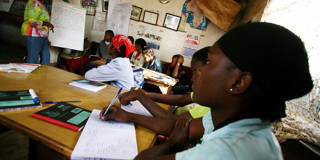Although the number of children enrolled in primary school in Africa increased from 60 million in 2000 to some 250 million today, school quality remains uneven. The challenge now is to ensure that all children, including those who are in school – at all grade levels – are learning what they need to thrive.
WASHINGTON, DC – This week, the Bill & Melinda Gates Foundation will release its annual Goalkeepers report card assessing progress toward the UN Sustainable Development Goals. Among the expected findings is a prediction that by 2050, nearly 90% of global poverty will be concentrated in Sub-Saharan Africa, and two-thirds of the world’s poorest people will live in just ten countries.
The ability to identify human-development hotspots – what we call “severely off-track countries” (SOTCs) – should, in theory, make it easier to apply solutions. Unfortunately, some aid agencies tend to avoid fragile states out of fear that their resources will be wasted. Currently, less than a quarter of OECD countries’ programmable aid is allocated to SOTCs.
But the perception that fragility presages failure is misplaced. With adequate planning, it is possible to implement projects that improve lives in even the riskiest places. Best of all, we know where to start: by investing more in human capital, and especially in education.

WASHINGTON, DC – This week, the Bill & Melinda Gates Foundation will release its annual Goalkeepers report card assessing progress toward the UN Sustainable Development Goals. Among the expected findings is a prediction that by 2050, nearly 90% of global poverty will be concentrated in Sub-Saharan Africa, and two-thirds of the world’s poorest people will live in just ten countries.
The ability to identify human-development hotspots – what we call “severely off-track countries” (SOTCs) – should, in theory, make it easier to apply solutions. Unfortunately, some aid agencies tend to avoid fragile states out of fear that their resources will be wasted. Currently, less than a quarter of OECD countries’ programmable aid is allocated to SOTCs.
But the perception that fragility presages failure is misplaced. With adequate planning, it is possible to implement projects that improve lives in even the riskiest places. Best of all, we know where to start: by investing more in human capital, and especially in education.